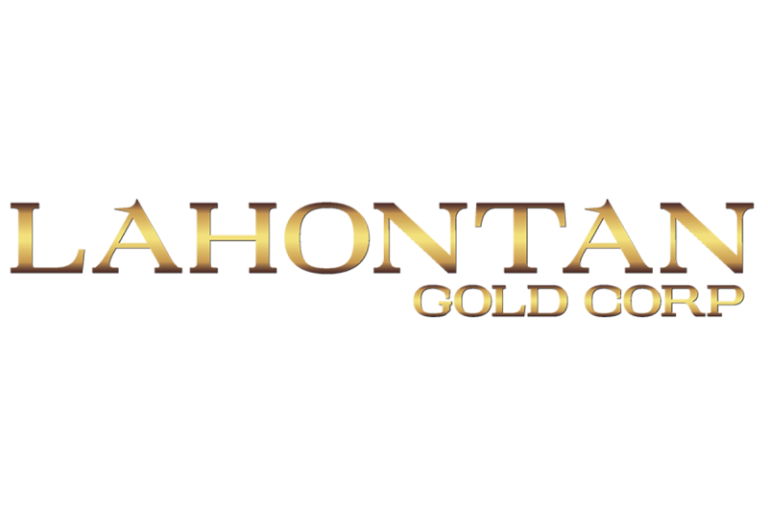Lahontan Gold Corp. (TSXV:LG)(OTCQB:LGCXF)(FSE:Y2F) (the ‘Company’ or ‘Lahontan’) is pleased to announce that the Company has completed the Purchase (the ‘Purchase‘) of 27 unpatented lode mining claims (the ‘York claims‘) from Emergent Metals Corp (‘Emergent‘). The York claims are contiguous with the southeast corner of the Santa Fe Mine Project and provide a compelling opportunity to significantly expand oxide gold and silver mineral resources previously defined at the York deposit*. Modeling of drill data during the mineral resource estimation process suggests that gold and silver mineralization likely extends onto the York claims. This targeting concept was in part validated by Lahontan’s recent drilling campaign where reverse-circulation drill hole YOR25-001R cut 89.9 metres (45.7 – 135.6m) grading 0.23 g/t gold (please see Lahontan Gold News Release dated September 2, 2025). The Company is currently planning additional drilling at the York target area for this Fall. With the addition of the York claims, the Company now owns or controls 415 unpatented lode mining claims, 67 unpatented millsite claims, and 24 patented lode mining claims encompassing over 2,832 ha or 28.3 km2 of mineral rights in one of the World’s premier gold belts: Nevada’s Walker Lane.
Kimberly Ann, Lahontan Founder, Chair, CEO, and President commented: ‘Lahontan is excited to have completed the Purchase of the York claims. The gold and silver resource expansion potential, combined with the ability to further layback the York pit in potential future mining operations, makes the Purchase a strategic acquisition for the Company. Lahontan now controls a district-scale land package that, despite prolific past production and the completion of over 1,200 drill holes, remains largely unexplored with multiple targets for resource expansion and new discoveries.’
Terms of the Purchase include:
- Lahontan has paid Emergent’s U.S. subsidiary, Golden Arrow Mining Corporation (‘GAMC‘), a sum of US$10,000.
- Lahontan has issued 2,000,000 common shares of Lahontan Gold Corp. to Emergent.
- GAMC will facilitate the transfer of the York Claims to Lahontan or its designee, to be completed within 30 days of today’s date.
- As part of the transfer, Lahontan has granted GAMC a 1% NSR royalty (the ‘Royalty‘) on the York Claims. At any time before the third anniversary of the Agreement, Lahontan may purchase the Royalty for US$500,000. After the third and before the seventh anniversary of the Agreement, Lahontan may purchase the Royalty for US$1,000,000.
About Lahontan Gold Corp.
Lahontan Gold Corp. is a Canadian mine development and mineral exploration company that holds, through its US subsidiaries, four top-tier gold and silver exploration properties in the Walker Lane of mining friendly Nevada. Lahontan’s flagship property, the 28.3 km2 Santa Fe Mine project, had past production of 359,202 ounces of gold and 702,067 ounces of silver between 1988 and 1995 from open pit mines utilizing heap-leach processing. The Santa Fe Mine has a Canadian National Instrument 43-101 compliant Indicated Mineral Resource of 1,539,000 oz Au Eq(48,393,000 tonnes grading 0.92 g/t Au and 7.18 g/t Ag, together grading 0.99 g/t Au Eq) and an Inferred Mineral Resource of 411,000 oz Au Eq (16,760,000 grading 0.74 g/t Au and 3.25 g/t Ag, together grading 0.76 g/t Au Eq), all pit constrained (Au Eq is inclusive of recovery, please see Santa Fe Project Technical Report and note below*). The Company plans to continue advancing the Santa Fe Mine project towards production, update the Santa Fe Preliminary Economic Assessment, and drill test its satellite West Santa Fe project during 2025. For more information, please visit our website: www.lahontangoldcorp.com
* Please see the ‘Preliminary Economic Assessment, NI 43-101 Technical Report, Santa Fe Project’, Authors: Kenji Umeno, P. Eng., Thomas Dyer, PE, Kyle Murphy, PE, Trevor Rabb, P. Geo, Darcy Baker, PhD, P. Geo., and John M. Young, SME-RM; Effective Date: December 10, 2024, Report Date: January 24, 2025. The Technical Report is available on the Company’s website and SEDAR+. Mineral resources are reported using a cut-off grade of 0.15 g/t AuEq for oxide resources and 0.60 g/t AuEq for non-oxide resources. AuEq for the purpose of cut-off grade and reporting the Mineral Resources is based on the following assumptions gold price of US$1,950/oz gold, silver price of US$23.50/oz silver, and oxide gold recoveries ranging from 28% to 79%, oxide silver recoveries ranging from 8% to 30%, and non-oxide gold and silver recoveries of 71%.
Qualified Person
Brian J. Maher, M.Sc., CPG-12342, is a ‘Qualified Person’ as defined under Canadian National Instrument 43-101, Standards of Disclosure for Mineral Projects, and has reviewed and approved the content of this news release in respect of all disclosure other than the Mineral Resource Estimate as noted above. Mr. Maher is Vice President-Exploration for Lahontan Gold and has verified the data disclosed in this news release, including the sampling, analytical and test data underlying the disclosure.
On behalf of the Board of Directors
Kimberly Ann
Founder, CEO, President, and Executive Chair
FOR FURTHER INFORMATION, PLEASE CONTACT:
Lahontan Gold Corp.
Kimberly Ann
Founder, Chief Executive Officer, President, and Executive Chair
Phone: 1-530-414-4400
Email: Kimberly.ann@lahontangoldcorp.com
Website: www.lahontangoldcorp.com
Cautionary Note Regarding Forward-Looking Statements:
Neither TSX Venture Exchange(‘TSXV’) nor its Regulation Services Provider (as that term is defined in policies of the TSX Venture Exchange) accepts responsibility for the adequacy or accuracy of this release. Except for statements of historical fact, this news release contains certain ‘forward-looking information’ within the meaning of applicable securities law. Forward-looking information is frequently characterized by words such as ‘plan’, ‘expect’, ‘project’, ‘intend’, ‘believe’, ‘anticipate’, ‘estimate’ and other similar words, or statements that certain events or conditions ‘may’ or ‘will’ occur. Forward-looking statements are based on the opinions and estimates at the date the statements are made and are subject to a variety of risks and uncertainties and other factors that could cause actual events or results to differ materially from those anticipated in the forward-looking statements including, but not limited to delays or uncertainties with regulatory approvals, including that of the TSXV. There are uncertainties inherent in forward-looking information, including factors beyond the Company’s control. The Company undertakes no obligation to update forward-looking information if circumstances or management’s estimates or opinions should change except as required by law. The reader is cautioned not to place undue reliance on forward-looking statements. Additional information identifying risks and uncertainties that could affect financial results is contained in the Company’s filings with Canadian securities regulators, which filings are available at www.sedarplus.com.
Click here to connect with Lahontan Gold (TSXV:LG,OTCQB:LGCXF) to receive an Investor Presentation
Source
This post appeared first on investingnews.com









